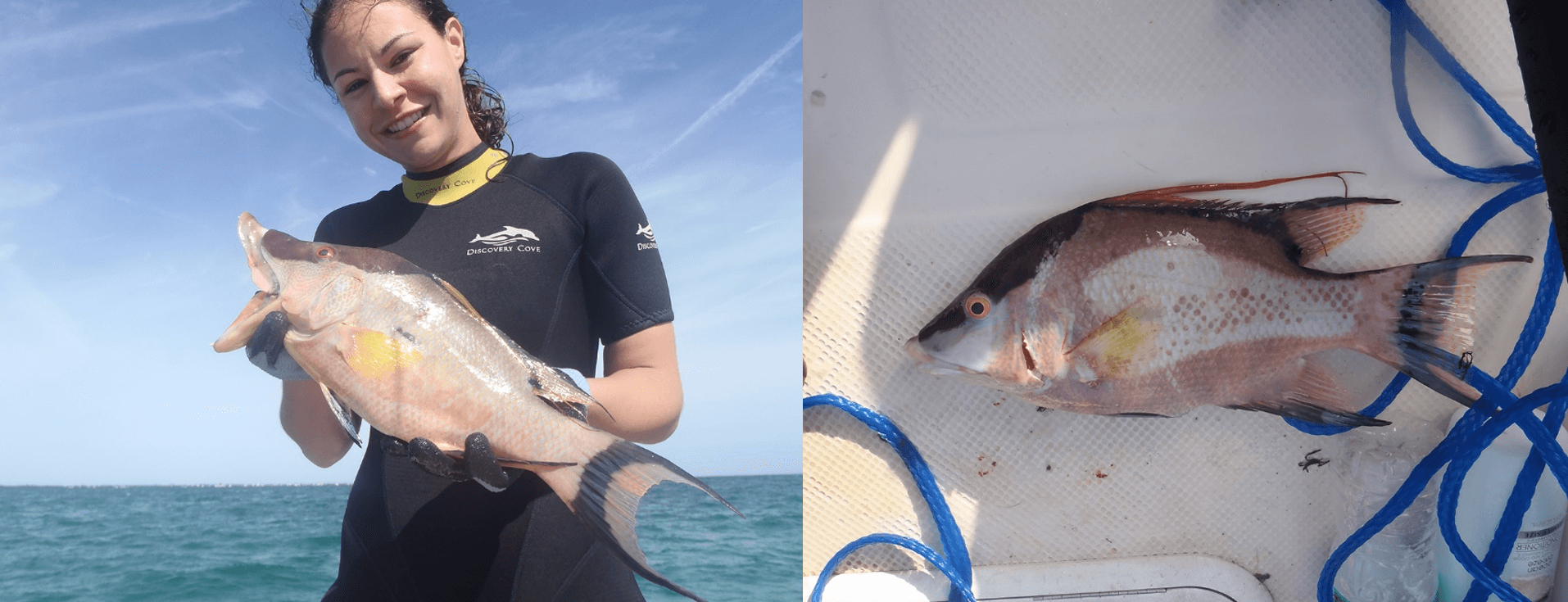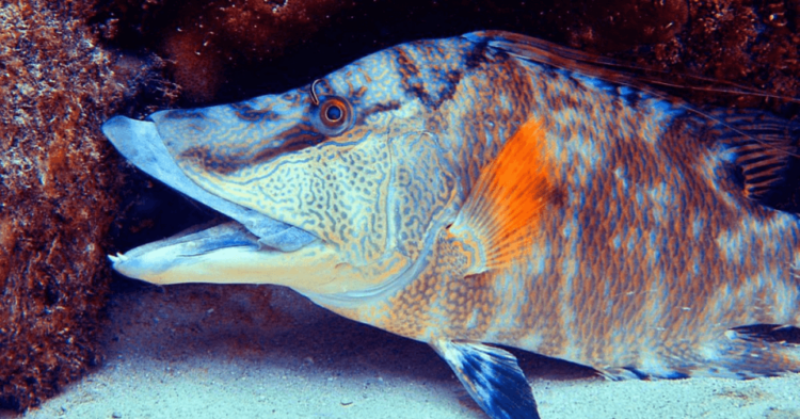
A common fish in the western Atlantic Ocean from North Carolina to Brazil, the hogfish is known for its color-changing skin. The species can morph from white to mottled to reddish-brown in a matter of milliseconds to blend in with corals, sand or rocks.
Still, Schweikert was surprised because this hogfish had continued its camouflage even though it was no longer alive. Which got her wondering: can hogfish detect light using only their skin, independently of their eyes and brain?
“That opened up this whole field for me,” Schweikert said.

In the years that followed, Schweikert started researching the physiology of “skin vision” as a postdoctoral fellow at Duke University and Florida International University.
In 2018, Schweikert and Duke biologist Sönke Johnsen published a study showing that hogfish carry a gene for a light-sensitive protein called opsin that is activated in their skin, and that this gene is different from the opsin genes found in their eyes.
Other color-changing animals from octopuses to geckos have been found to make light-sensing opsins in their skin, too. But exactly how they use them to help change color is unclear.
“When we found it in hogfish, I looked at Sönke and said: Why have a light detector in the skin?” said Schweikert, now an assistant professor at the University of North Carolina Wilmington.
One hypothesis is that light-sensing skin helps animals take in their surroundings. But new findings suggest another possibility — “that they could be using it to view themselves,” Schweikert said.
In a study appearing Aug. 22 in the journal Nature Communications, Schweikert, Johnsen and colleagues teamed up to take a closer look at hogfish skin.
The researchers took pieces of skin from different parts of the fish’s body and took pictures of them under a microscope.
Up close, a hogfish’s skin looks like a pointillist painting. Each dot of color is a specialized cell called a chromatophore containing granules of pigment that can be red, yellow or black.

It’s the movement of these pigment granules that changes the skin color. When the granules spread out across the cell, the color appears darker. When they cluster together into a tiny spot that’s hard to see, the cell becomes more transparent.
Next, the researchers used a technique called immunolabeling to locate the opsin proteins within the skin. They found that in the hogfish, opsins aren’t produced in the color-changing chromatophore cells. Instead, the opsins reside in other cells directly beneath them.
Images taken with a transmission electron microscope revealed a previously unknown cell type, just below the chromatophores, packed with opsin protein.
This means that light striking the skin must pass through the pigment-filled chromatophores first before it reaches the light-sensitive layer, Schweikert said.
The researchers estimate that the opsin molecules in hogfish skin are most sensitive to blue light. This happens to be the wavelength of light that the pigment granules in the fish’s chromatophores absorb best.
The findings suggest that fish’s light-sensitive opsins act somewhat like internal Polaroid film, capturing changes in the light that is able to filter through the pigment-filled cells above as the pigment granules bunch up or fan out.
“The animals can literally take a photo of their own skin from the inside,” Johnsen said. “In a way they can tell the animal what it’s skin looks like, since it can’t really bend over to look.”
“Just to be clear, we’re not arguing that hogfish skin functions like an eye,” Schweikert added. Eyes do more than merely detect light — they form images. “We don’t have any evidence to suggest that’s what’s happening in their skin,” Schweikert said.
Rather, it’s a sensory feedback mechanism that lets the hogfish monitor its own skin as it changes color, and fine-tune it to fit what it sees with its eyes.
“They appear to be watching their own color change,” Schweikert said.
The researchers say the work is important because it could pave the way to new sensory feedback techniques for devices such as robotic limbs and self-driving cars that must fine-tune their performance without relying solely on eyesight or camera feeds.
“Sensory feedback is one of the tricks that technology is still trying to figure out,” Johnsen said. “This study is a nice dissection of a new sensory feedback system.”
“If you didn’t have a mirror, and you couldn’t bend your neck, how would you know if you’re dressed appropriately?” Schweikert said. “For us it may not matter,” she added. But for creatures that use their color-changing abilities to hide from predators, warn rivals or woo mates, “it could be life or death.”
The study was co-authored by researchers from the Florida Institute of Technology, Florida International University, and the Air Force Research Laboratory. Financial support came from Duke University, Florida International University, the Marine Biological Laboratory and the National Science Foundation (1556059).































